In the age of touchscreen keyboards, one company is bold enough to still push physical keyboards on smartphones. That company is BlackBerry, and the firm has produced one of the most unique devices of 2018 in the KEY2.
Indeed, the physical keyboard is the defining feature of this device. But aside from that, it has a 4.5-inch 1080p display, a Snapdragon 660 chipset, and lots of RAM and storage. BlackBerry also boasts that this is its first device with a dual-lens camera.
All-in-all, it's a pretty good device. You just have to want that physical keyboard. Here's our review:
Specs
| CPU | Snapdragon 660, quad-core 2.2GHz Kryo 260, quad-core 1.8GHz Kryo 260 |
|---|---|
| GPU | Adreno 512 |
| Display | 4.5 inches, 1080x1620, 434ppi, IPS LCD |
| Body | 151.4x71.8x8.5mm, 168g |
| Camera | 12MP + 12MP, Front - 8MP |
| Aperture | f/1.8 + f/2.6, Front - f/2.0 |
| Video Capture | 4K - 30fps, 1080p - 60fps, Front - 1080p - 30fps |
| Camera features | Dual-pixel PDAF, dual-LED flash |
| Storage | 64GB, expandable to 256GB |
| RAM | 6GB |
| Battery | 3,500mAh |
| Price | $649 |
Day one
Design
The BlackBerry KEY2 is an absolute winner when it comes to design. Reminiscent of the Nokia Lumia 830 and 930, it has an aluminum frame with a plastic back. This gives it a unique yet elegant look, as it's not just another smartphone with a metallic-colored glass back. The plastic back panel is textured, giving it a solid grip.

Unfortunately, despite the plastic back, there's still no wireless charging. It's also not removable, meaning that you can't swap out the battery. These things aren't exactly deal-breakers. Wireless charging would be nice - even if it's not a big deal - and removable batteries really aren't a thing anymore, at least in premium smartphones.
On the top-left of the back is where you'll find the dual-lens camera module, which is horizontally arranged. The placement and design is similar to that of an iPhone 8 Plus.

The metal frame, along with the textured back, gives the device a premium feel with solid build quality. On the right side of the frame, the volume rocker is at the top, with the power button placed below it. Below that is a convenience button, which can be programed for various shortcuts.

The 3.5mm audio jack is placed on the top, while the USB Type-C charging port and the dual speakers are placed on the bottom. Personally, I'm a fan of the charging port and the 3.5mm jack being on the same side, but I've found battery life on this device to be good enough that I don't seem to need to do both at once. On the other hand, some find it useful to have the headphone jack on the top so it's still accessible when the device is docked. And then on the left side, there's a tray for the nano-SIM and micro-SD card.
The front of the device is about what you'd expect. There's a physical keyboard on the bottom that's 20% larger than on its predecessor, and a 4.5-inch, 3:2 touchscreen display is placed above it.
Display
The 4.5-inch display is an IPS LCD with a 1080x1620 resolution, giving it a 3:2 aspect ratio. This is the same aspect ratio that you'll find in many PCs and tablets, like Microsoft's Surface lineup. It's radically different from most phones, however, which have gone from 16:9 to 18:9, or even wider.
Personally, I love the display of this device. I hate the super-wide trend that we're seeing, and that those phones have such narrow bezels. You don't have to worry about accidentally hitting the side of the screen or something, which does often happen with other devices.

At 434ppi, you don't have to worry about pixelation, everything is crystal clear. It's also bright enough to be seen in daylight without issues.
Aside from the expected productivity use case, I quite enjoy the display for watching movies and TV shows. This is because you can hold the side with the keyboard without blocking part of the display with your fingers. What doesn't work as well is playing games, since you're reaching across that same keyboard.
Keyboard
The KEY2's keyboard is 20% larger than its predecessor, and BlackBerry has raised the keys as well. I believe that the physical keyboard has its pros and cons. After all, this is an age where touchscreen keyboards have definitively won the market, and for good reason. When all is said and done, I'm still going to prefer a touchscreen keyboard after this, but I obviously don't speak for everyone.

And as I've said, you really have to want the physical keyboard for this to be the phone for you. And if it's what you want, then there is no better device out there.
Here are some key features:
Fingerprint sensor
The most used key is likely going to be the space bar, as it doubles as a fingerprint sensor. It's a very smart implementation, as sensors on the back of the device or on the side would probably feel unnatural with buttons on the front.
In case you're wondering, that space bar does not double as a home button though. This took me a day to get used to, because I have that muscle memory that makes me feel like a fingerprint sensor on the front of the phone should be a home button.
Gestures
Another feature that I love about the keyboard is gestures. You can swipe up, down, left, or right across the keyboard, and it acts as if you swiped that way on the display. The capacitive input on the keys allow for this.
Gestures also work while you're typing. For example, swiping to the left while typing will remove the word you just typed.
Swipe
Yes, BlackBerry has implemented a swipe keyboard, and it works exactly as it does on a touchscreen, but with physical keys. At first, it feels awkward, and it's not very good. The device does learn from your corrections though, and it seems to learn pretty quickly. Between the machine learning and getting used to it, it was a great tool.
Swipe is not on by default, and neither is the setting for it to learn from your corrections. You'll have to turn these on in Settings.
Shortcuts
You can program up to 52 shortcuts on the BlackBerry KEY2. With these, you can launch an app, compose an email, create a text, take a picture, record a video, and much more. You can do two for each letter on the keyboard, with a short or a long press.
The Convenience Key
Did I mention that this phone is big on shortcuts? Yes, you can create 52 keyboard shortcuts, but there's also a dedicated Convenience Key on the side, which will show you up to three shortcuts when you press it.

The idea is that you'll be able to launch apps to launch specific tasks more quickly, without having to go back to the home screen.
The selection of shortcuts is exactly the same as it is for keyboard shortcuts. There is actually a large amount of third-party apps that this works with too, which is great. You can create a note in OneNote, launch an audiobook in Audible, and more.
Productivity Tab
You might have noticed by now that in all of the screenshots, there's a little tab on the side. That's called the Productivity Tab. For one thing, the tab on the side can be customized. It can be a different size, and you can move it to the left side of the screen if you want, and you can even remove it.
Opening the Productivity Tab provides a number of items that you can view at a glance, such as email, calendar, and so on.

The five default selections can be rearranged, removed, or you can add your own. By default, it shows your calendar, the Hub (which we'll go deeper into later), tasks, calls and texts, and widgets. The items that you can add later are other widget screens.
Apps
Obviously, BlackBerry has its share of apps. Interestingly, most of them are available in the Google Play Store, and you can use them on any device.
DTEK
DTEK is BlackBerry's security solution. You can use it to check the health of your device, or you can use it to scan your device.
BlackBerry has long been a leader in mobile device security. That has not changed since its switch to Android.

BBM
Look, I understand that people love BBM, which is BlackBerry's own messaging solution. I don't know anyone that uses it, and I don't need another messaging solution beyond what I already use, which is SMS, email, Messenger, Hangouts, Slack, and Skype.
Hub
BlackBerry Hub is an app that I really like. It combines all of your social and messaging apps into one, so you'll see your notifications from email, SMS, Skype, Slack, BBM, Twitter, and anything else you can think of.

The way it works is that if you tap on one of the messages, it opens it in its native app. You can even delete the messages from Hub, and it's all pretty seamless. I like it a lot, enough that I plan on installing it on other devices going forward.
One issue that I had with it was that it just wouldn't connect to Twitter, for some reason. It wasn't really a big deal though, since I turn off Twitter notifications.
Obviously, you can control which apps show up in there, with simple checkboxes in the app's settings.
Camera
As BlackBerry boasts, the KEY2 is its first smartphone with a dual-lens camera. Both lenses are 12 megapixels, while one has an f/1.8 aperture and the other is f/2.6. As usual, the two lenses combine for a depth effect on photos when you turn the feature on.
There are various methods for implementing a dual-lens system. For example, Huawei uses one RGB sensor and one monochrome sensor. BlackBerry's implementation is similar to Apple's and Samsung's, in that the second lens provides a 2X optical zoom.
There are pros and cons to the optical zoom idea. With digital zoom, you just lose quality. The sensor only sees a certain area, so if you try to zoom, you're just cutting out part of that area. With optical zoom, you're using a lens that actually has a different field of view, so you're not losing quality. The downside is that the second lens isn't letting in as much light, so at night, you'll either get an image that's grainy due to the sensor size and aperture, or grainy because the camera resorted to digital zoom.
Personally, I prefer a good 2X optical zoom, but I did have some troubles with this one. When you get to the samples below, you'll find that in the ones with 2X zoom, the entire color profile of the image changes. Vibrant colors in nature seem a little washed out. It's not terrible, but it is if you want to keep the colors you originally had while using a 2X zoom.
I also had mixed results with portrait mode, as you'll also see from the images below. You can set the camera to focus before it shoots, which I recommend doing, but it didn't always focus on the subject, which was frustrating.
And then there's the eight-megapixel front camera. I did not care for the front camera, as the images seemed overexposed. My face looked red in many of the shots. Check out the samples below.
Ultimately, I'd say the camera is average. If you're a smartphone camera lover like I am, then you're probably going to want to look elsewhere, like Huawei's P20 Pro, Samsung's Galaxy S9, or even an iPhone X.
Performance
The BlackBerry KEY2 uses Qualcomm's Snapdragon 660 chipset, which includes eight Kryo 260 cores. I believe that this was the right choice to make, compared to the flagship Snapdragon 845. The truth is that performance is great, and if I told you that the phone had a Snapdragon 845, you probably wouldn't see the difference.
Qualcomm's Mobile Platforms come in a variety of tiers. The Snapdragon 200 is for the low end, the 400 series is the lower mid-tier, and the 800 series is premium. The 600 series has a couple of tiers in itself, the higher end of which (which is currently the Snapdragon 660), seems to be being rebranded as the 700 series. And the whole reason that the 700 series now exists, is because even the chips that aren't in the premium range are considered high end.
And besides, Snapdragon 845 devices are getting expensive, pushing on that $1,000 price range. A Snapdragon 660 is fine for everything that you're going to do with this phone.
For benchmarks, I used Geekbench 4, AnTuTu, and GFXBench. First up is Geekbench 4, which tests the CPU.

As you can see, it scores pretty well, around Qualcomm's flagship Snapdragon 820 from just a couple of years ago. Next up is AnTuTu, which tests a little bit of everything.

Overall, the KEY2 performed better than 64% of other users, with the CPU defeating 99%. You can see that where the device underperforms is the memory. Next up is GFXBench, which checks the GPU.

Ultimately, you're going to be happy with the performance on the KEY2. I don't expect you to be playing any really high end games, so you're good.
I feel like BlackBerry could do more
I don't want you to take my criticisms in this section too seriously, because we're not actually talking about anything that's wrong with the KEY2. This is more about what could be done better.
BlackBerry says that the KEY2 is for productivity-focused people that want to get work done. That's why it's OK that the keyboard makes it a poor device for playing games, because it's not meant for people that want to play games.
But if we're going the productivity route, I feel like more could have been done. For example, Microsoft, Samsung, and Huawei have all offered desktop experiences with phones. Just plug your phone into a display via an HDMI adapter, pair a mouse and keyboard via Bluetooth, and you're good to go.
Something like this seems like it would be right up BlackBerry's alley, since the phone already comes with the keyboard. Those capacitive gestures could be tuned for the desktop experience, and BlackBerry could offer something that no one else can.
I also think it would be a great idea for BlackBerry to partner with Microsoft for Office integration.
Ultimately, you can look across the board at various ideas that companies have come up with for productivity, and I just find it strange that BlackBerry isn't doing them.
Conclusion
The whole theme of this device is the physical keyboard, and BlackBerry is the physical keyboard master. If this is something that you want from a device, then look no further. If you're fine with a touchscreen keyboard, then this phone isn't for you, and BlackBerry isn't even pretending that it is.

Take away the keyboard and you have a phone that's terrible for playing games, and a camera that's average at best.
At the end of the day, it's a productivity machine. Shortcuts really make it a great experience, allowing you to jump from the app you're in to sending a text to your significant other without ever having to return to the home screen. And you can really go nuts with the shortcuts, with 52 being available through the keyboard and another three through the Convenience Key. Oh, and don't forget about the Productivity Panel.
I also found the swipe gestures on the keyboard to be really useful after some time with it learning my style. I still have issues typing on the keyboard, so swipe came in handy.
BlackBerry itself says that this device is aimed at a specific group of people. If you're one of those people, then you'll be happy with it. If you're not, then you'll hate it.





















































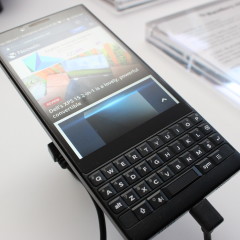


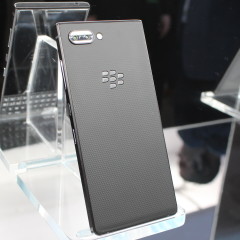
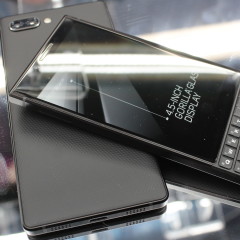
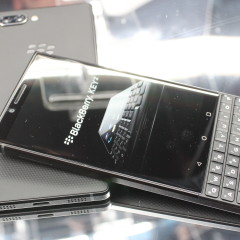
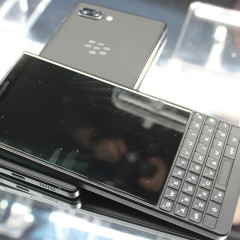

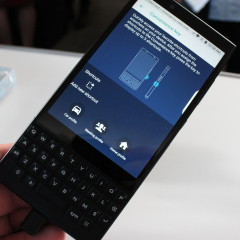
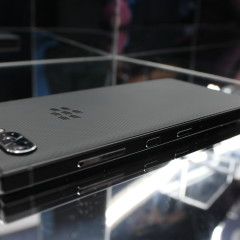
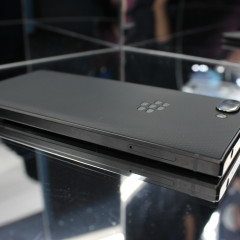
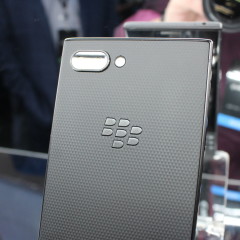
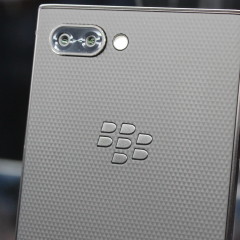
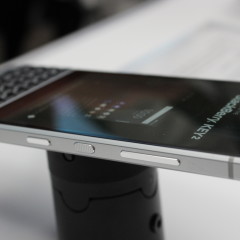
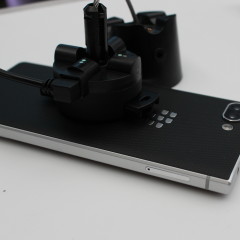
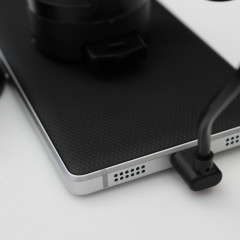

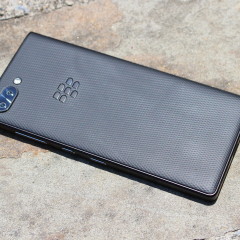
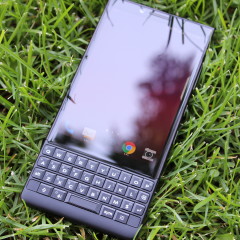


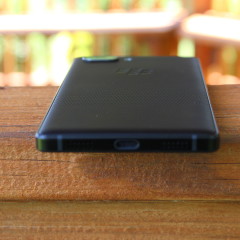
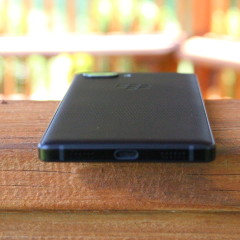

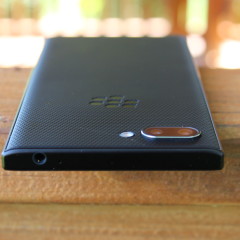
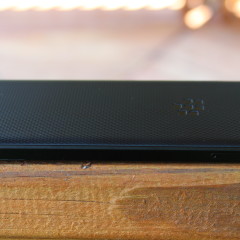

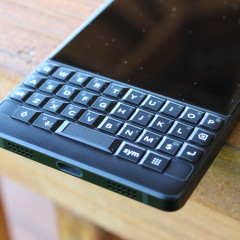









3 Comments - Add comment